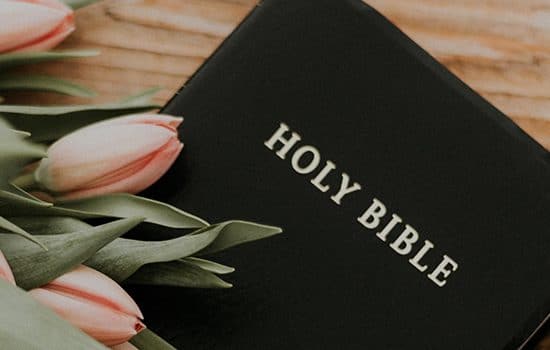 The Lamb of God
The Lamb of God
Formations: December 31, 2017
Scripture: John 1:19-20, 24-34
 Michael K OlmstedJohn’s Gospel does not begin with the Bethlehem narrative, instead laying a theological foundation reminiscent of the creation poetry found in Genesis 1:1-2:3. John understands that Jesus’ appearance on earth is the continuation of God’s original plan to love and bless the human race. “In the beginning was the Word, and the Word was with God, and the Word was God” (John 1:1). The first eighteen verses of the Gospel of John is – like the Genesis text – a powerful poem that announces Jesus” public ministry in a seven day format:
Michael K OlmstedJohn’s Gospel does not begin with the Bethlehem narrative, instead laying a theological foundation reminiscent of the creation poetry found in Genesis 1:1-2:3. John understands that Jesus’ appearance on earth is the continuation of God’s original plan to love and bless the human race. “In the beginning was the Word, and the Word was with God, and the Word was God” (John 1:1). The first eighteen verses of the Gospel of John is – like the Genesis text – a powerful poem that announces Jesus” public ministry in a seven day format:
Day 1 (1:19-28) – John the Baptizer’s testimony to the priests and Levites
Day 2 (1:29-34) – John declares Jesus is the “Lamb of God”
Day 3 (1:35-39) – Jesus visits with John’s disciples
Day 4 (1:40-42) – Andrew and Peter become Jesus’ disciples
Day 5 (1:43-51) – Jesus calls Philip and Nathaniel as disciples
Day 6 – No information, but probably a day of travel and extended teaching
Day 7 (2:1-11) – Jesus attends a wedding at Cana of Galilea where he utilizes the image of a wedding feast to celebrate God’s love and the miracle of turning water to wine for God’s transforming power
We study only the first two days as John reveals how John the Baptizer is indeed the prophetic voice introducing the promised Messiah to a longing world. The priests and Levites, powerful leaders of the Jerusalem religious/political coalition, are concerned about this radical wilderness preacher who is announcing the coming of God’s kingdom soon and drawing huge crowds. John the Baptizer is not “one of their own” and they are concerned about his theology and possible influence among elements that could cause an uprising and consequent Roman reaction.
“Who are you?” they asked with considerable authority, followed by a theological interrogation: “Are you the Christ, or Elijah, or the prophet?” John emphatically declares “I’m not the Christ” (v. 20). The religious authorities were looking for the Messiah who would be their king from the family line of King David. Many were waiting for a reappearance of the prophet Elijah as Malachi 4:5 foretold: “Behold, I am going to send you Elijah the prophet before that great and terrible day of the Lord” (NASV). There was an additional idea that “a prophet,” much like Moses, would appear to announce the “end times.”
John the Baptizer dismisses these ideas about himself and immediately turns the focus on Jesus, saying, “I’m not worthy to untie his sandal straps” (v. 27). The difference between John and Jesus is as stark as that between the lowest slave and God’s promised deliverer! Some of John’s disciples understood and began to follow Jesus. The “orthodox committee” headed back to Jerusalem, probably thinking John is just another religious extremist taking advantage of the fears and frustrations of the common people.
The gospel writer uses this event to introduce the “Word who was God” as Jesus (v. 1). We hear why John the Baptizer was so certain at that point Jesus was God’s Son. John says Jesus “existed before me” and my role is to baptize with water so he will be “known to Israel” (v. 31). John’s testimony is gripping as he describes what happened at Jesus’ baptism: “I saw the Spirit coming down from heaven like a dove, and it rested on him. Even I didn’t recognize him, but the one who sent me to baptize with water said to me, ‘The one on whom you see the Spirit coming down and resting on is the one who baptizes with the Holy Spirit” (v. 33). “This one is God’s Son” (v. 34).
John’s identity is defined by Jesus and his purpose is to herald Jesus’ identity to the world as certainly as the angels announced Jesus birth in Bethlehem. In our day, we also become the witnesses and announcers that God’s Son has come into our world so we can know God’s love and forgiveness.
John the Baptizer defined Jesus as “the Lamb of God who takes away the sin of the world” (v. 29). The Apostle John later used that description twenty-nine times in his book we call “Revelation.” The “Lamb of God” probably reflects back on the Exodus story when God delivered Israel from slavery in Egypt. The last plague was the death of the firstborn and Israel was spared when they painted their door jambs with the blood of a sacrificed lamb. The Apostle Paul picked up on that same image: “Christ our Passover Lamb has been sacrificed” (1 Corinthians 5:7). There were daily sacrifices of lambs at the Temple for God’s forgiveness. We moderns think of this as gruesome or negative, but the image is one of lifeblood being poured out for those who are dying spiritually. Christ has willingly given himself because we are dying. Jesus, who is one with the Father, “God in flesh,” has given himself for us! Isaiah 11:19 describes the suffering servant of God who is “like a young lamb led to the slaughter.”
You must not overlook John the Baptizer’s second crucial description of Jesus: He “will baptize people with the Holy Spirit” (v. 33). The clear distinction is that John’s baptism of people in the Jordan was a religious rite, a public statement of belief that God’s promise of deliverance is real, a faith action. But what Christ offers is a change within the human heart, a transformation of the human life as God’s Spirit comes to live within us. What began with the creation poetry of Genesis, moved through Abraham and Sarah, stretched through the exodus and years of David’s dynasty, survived the Babylonian exile, and the influences of paganism, at last concluding with the birth of the Savior in Bethlehem.
I began this Advent series remembering my grandmother’s nativity figures in Chicago when I was a little boy. I had no idea what theology was in those days, but I knew it was important to believe in God and love others. As I grew up I learned more about God and church until the day came when I finally understood faith has to be more than Bible stories, more than reciting Bible verses and singing hymns. I was seventeen when I realized God loves me, that Christ came into this world to show me the way to God and then give his life away for me. That’s when I began loving God and serving him. I still place a nativity set under my Christmas tree so that in the midst of all the holiday festivities there is a visual reminder that it’s really all about God’s gift of Jesus, the Lamb of God. May he be born in your heart today!
Retired after almost 50 years in pastoral ministry, Michael K. Olmsted enjoys family, supply preaching and interim work, literature, history, the arts and antiques.
Formations is a curriculum series from Smyth & Helwys Publishing, Inc. through NextSunday Resources.
The PDF download requires the free Acrobat Reader program. It can be downloaded and installed at https://get.adobe.com/reader (uncheck optional offers first).


